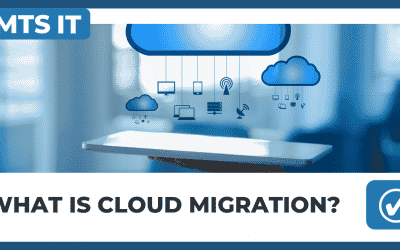Data Security involves putting in place standard policies, and procedures to protect data from a range of issues:
- Unauthorized access
- Accidental loss
- Destruction
Data security can include certain technologies in admin and logistical controls. It can even incorporate the physical aspect of security to limit access or disclosure of sensitive data. Most organizations have some type of data security control, some more robust than others.
These controls can also include implementing safeguards to prevent access to areas such as websites, computers, or business databases. Data security remains one of the most important considerations for any serious entity.
Benefits of Data Security
Loss or unauthorized disclosure of valuable data can be quite costly to an organization. It’s the reason data security is quite useful. For instance:
Safeguards all valuable information: Sensitive information is never supposed to leak. Whether we are talking about bank customers’ details or a hospital’s patients’ information; these are crucial information that is not meant for every prying eye. Data security keeps all this information exactly where it’s meant to be.
Important for your reputation: Any organization that can keep secrets also helps to build confidence among all stakeholders including customers, who know that their data is both safe and secure.
Marketing and competitive edge: Keeping sensitive information from illegal access and disclosure keeps you ahead of your competitors. Preventing any access to your future development or expansion plans is key to maintaining your competitive advantage.
Saves on development and support costs: The earlier you plug security features into your application, the fewer costs you may incur from any future support and development costs in terms of code modifications.
Potential risks of poor data security
The more technologically advanced businesses become, the more susceptible their systems become to attacks. Poor data security can subject your company to the following dangers:
Costly fines and litigations: Data breaches are usually serious offences which can lead to legal actions from the customer against an organization. Failure to comply with any applicable state or federal data protection regulations can result in fines exceeding hundreds of thousands of dollars, depending on the severity of the breach, the number of individuals affected, and the company’s attempts to notify consumers and mitigate risks.
Reputation damage: Privacy and security of data are important, especially to your customers. If you don’t meet your end of this bargain, keeping your customers’ data secure in exchange for their business, your reputation as an organization can go up in flames. Customers tend to lose faith and confidence in a company that cannot keep their private information well-protected. Loss of business and a damaged reputation can often be even more costly over time than the hefty regulatory fines you also might be facing.
Loss of business: Cyber attackers have the potential to not only access and exploit sensitive information; they can also delete the same information. They can even introduce a highly destructive virus which infects the whole system, such as ransomware, requiring the payment of a ransom fee to regain access to your networks and sensitive data.
Poor data security could lead to an event which negatively impacts your business. Even the ability to conduct normal business may be changed. Again, it is a trickle-down effect, in which you may not be able to render the required services, leading to legal action and probable loss of revenue.
Types of Data Security
Access Controls
This type of data security measure includes limiting both physical and digital access to critical systems and data. This includes making sure all computers and devices are protected with mandatory login entry, and that physical spaces can only be entered by authorized personnel.
Authentication
Similar to access controls, authentication refers specifically to accurately identifying users before they have access to data. This usually includes things like passwords, PIN numbers, security tokens, swipe cards, or biometrics.
Backups & Recovery
Good data security means you have a plan to securely access data in the event of system failure, disaster, data corruption, or breach. You’ll need a backup data copy, stored on a separate format such as a physical disk, local network, or cloud to recover if needed.
Data Erasure
You’ll want to dispose of data properly and regularly. Data erasure employs software to completely overwrite data on any storage device and is more secure than standard data wiping. Data erasure verifies that the data is unrecoverable and therefore won’t fall into the wrong hands.
Data Masking
By using data masking software, information is hidden by obscuring letters and numbers with proxy characters. This effectively masks key information even if an unauthorized party gains access to it. The data changes back to its original form only when an authorized user receives it.
Data Resiliency
Comprehensive data security means that your systems can endure or recover from failures. Building resiliency into your hardware and software means that events like power outages or natural disasters won’t compromise security.
Encryption
A computer algorithm transforms text characters into an unreadable format via encryption keys. Only authorized users with the proper corresponding keys can unlock and access the information. Everything from files and a database to email communications can — and should — be encrypted to some extent.
What Is Data Encryption?
Data encryption is a security method where information is encoded and can only be accessed by a user with the correct encryption key. Encrypted data, appears scrambled or unreadable to a person accessing it without permission.
How Data Encryption is Used
Data Encryption is used to deter malicious parties from accessing sensitive data. Encryption makes using intercepted data as difficult as possible. It can be applied to all kinds of data protection needs ranging from classified government intel to personal credit card transactions. Data encryption software is used to develop an encryption scheme which can only be broken with large amounts of computing power.
Types of Encryption – Symmetric and Asymmetric
Encryption is often applied in two different forms, an asymmetric key or a symmetric key.
Asymmetric, or public-key cryptography, uses two linked keys, one private and one public. The encryption key is public and can be used by anyone to encrypt. The opposite key is kept private and used to decrypt.
A symmetric key, or secret key, uses one key to both encode and decode the information. This is best used for one to one sharing and smaller data sets.
How to Protect Your Data
Data encryption is a given in today’s world of cybersecurity. Hardly any responsible security programs are without it. To ensure your data is safe, educate your organization on best practices for data use and sharing.



